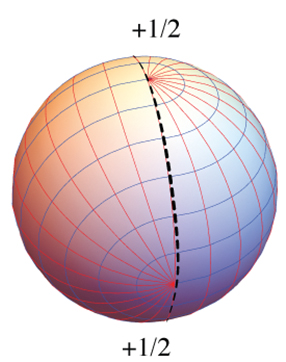EPJ E Highlight - Sac with spiral surface patterns facilitate substance delivery through biological membranes
- Details
- Published on 17 December 2018

Faceted microfilms made up of liquid crystals arranged in spiral patterns can help squeeze through membranes and deliver helpful molecules
Imagine a micron-sized ball of fluid enclosed in a thin film, similar to the film in soap bubbles, but made up of molecules resembling liquid crystal. These molecules can lower their overall energy by aligning their directions with their ever-changing neighbours—a state referred to as smectic phase. This means stacks of parallel stripe-like liquid-crystal layers form in the film. In a new study published in EPJ E, Francesco Serafin, affiliated with both Syracuse University, New York, and the Kavli Institute for Theoretical Physics (KITP) at UCSB, USA, together with his advisor Mark Bowick, also at the KITP, and Sid Nagel, from the University of Chicago, IL,USA, map out all the possible smectic patterns of such spherical films, or sac, at zero temperature. They determine the conditions under which it becomes easier for such sacs to pass through biological membranes and, potentially, deliver molecules attached to them at specific locations.
The constraints imposed on mapping parallel liquid crystals molecules onto a spherical shape produce defects in the liquid-crystal. In this study, the authors predict the existence of four defects, creating distortions that are accommodated as the shell bends in the defects' surroundings. The spherical film is most flexible, they note, when its lowest energy shape looks like a faceted tetrahedron with sharp edges and defects localised at the four vertices. The defects are natural candidate sites for attaching molecules with a special function for delivery into the body using such ball-shaped films.
Depending on the tilt angle between the stripe-like layers of the liquid-crystal-like molecules and the tetrahedron’s edge, the authors identify various patterns: lines of latitude, parallel spirals or a combination of the two. At zero or 30° tilt angle, all layers form closed latitutinal loops that are not easily deformed. At other tilt angles, the layers form spirals that allow localised compression to propagate a long distance along the film, making it easier for this spherical films to deform and squeeze through biological membranes.
F. Serafin, M. J. Bowick, and S. R. Nagel (2018), Topology and ground state degeneracy of tetrahedral smectic vesicles, Eur. Phys. J. E, 2018, 41:143. DOI 10.1140/epje/i2018-11755-y




